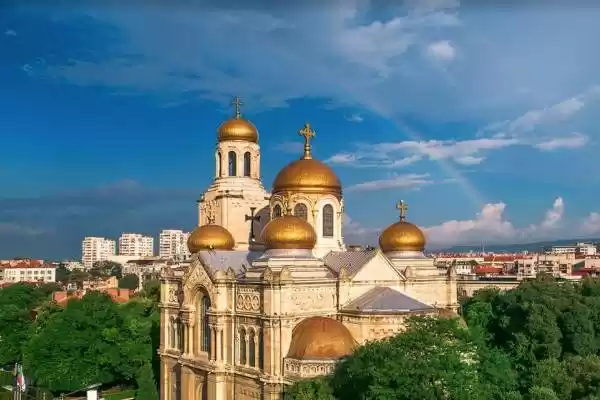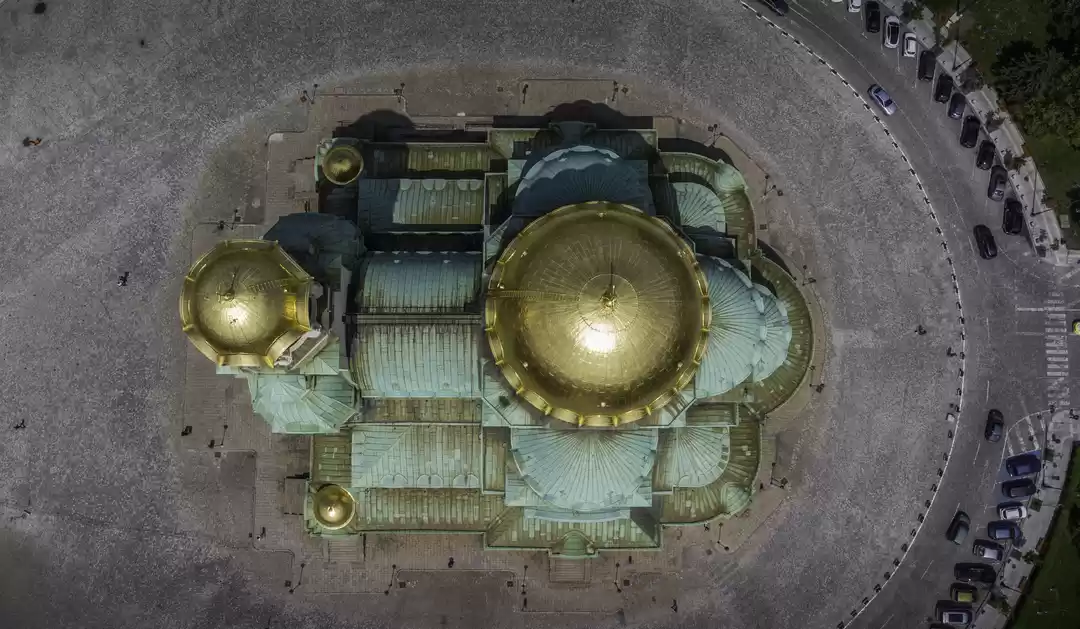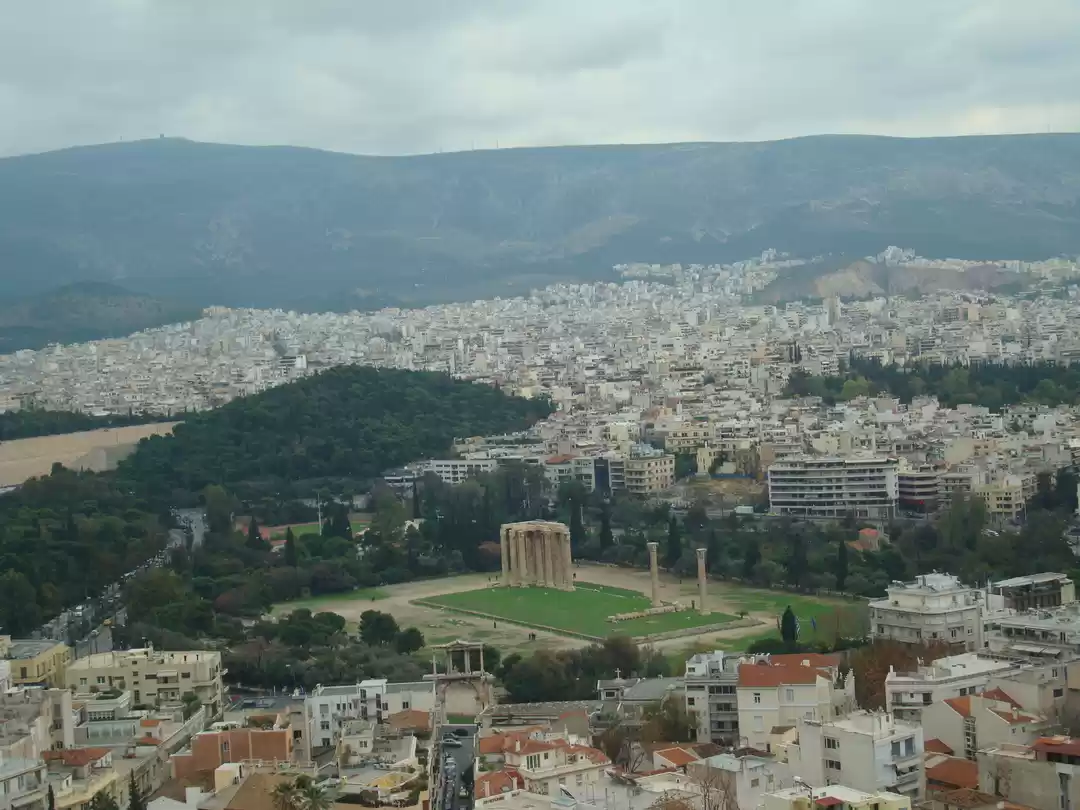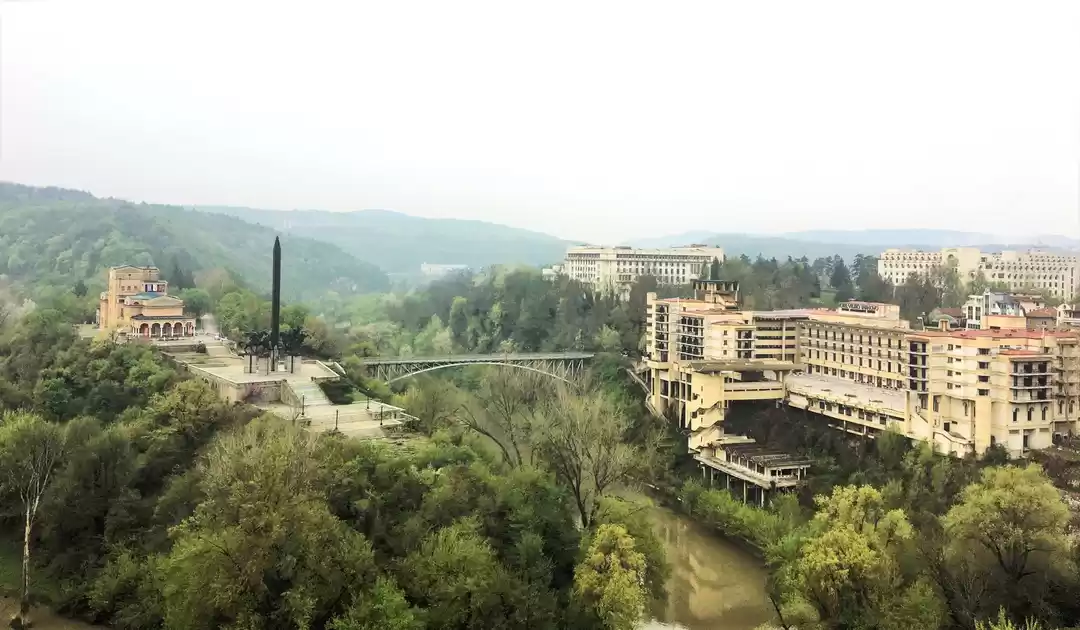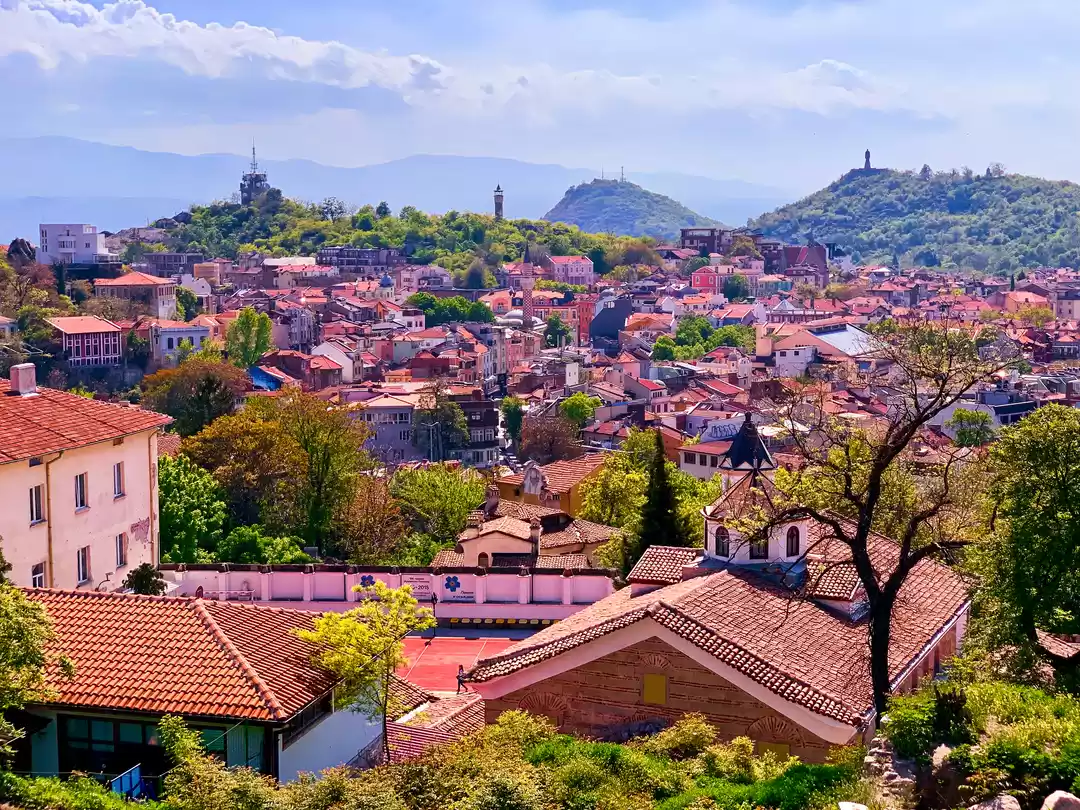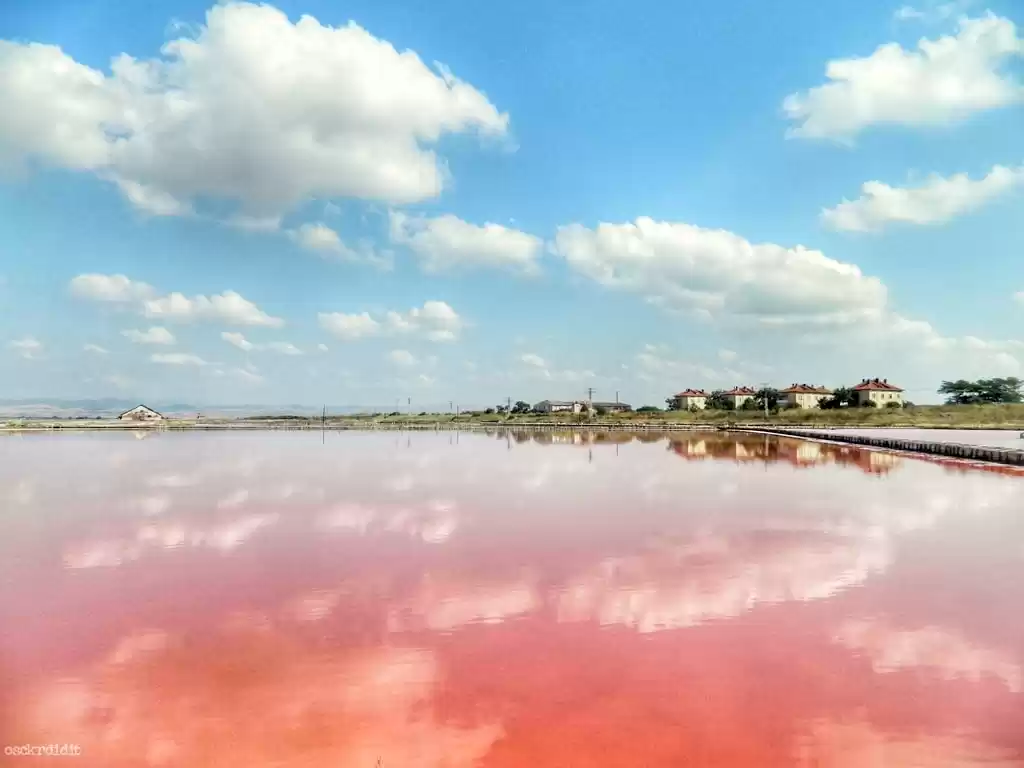
An exquisite resort city on the Gulf of Varna on the western coast of the Black Sea. North of Nessebar and Burgas, south of Constanta in Romania and Odessa in Ukraine. A pretty city surrounded by forests, orchards and vineyards. Tulips and statues - and some stark reminders of the iron-curtain era. Most importantly, the site of the ancient Varna culture. The place where they found the ‘Gold of Varna’, the world’s oldest treasure trove of gold.

Varna is Bulgaria’s third largest city after Sofia and Plovdiv. The name Varna emerged with the Slavic conquest of the area around the 6th and 7th centuries but the ancient Thracian settlement was known to the Greeks as Odessos. (That was the name of our hotel too.)
Over 30 prehistoric settlement mounds have been unearthed in the region of the Varna Lakes. The oldest artefacts are 100,000 years old. The Varna Culture has been dated to 4200-4600 B.C.E.

The Thracians seem to have excelled in metal processing, especially weapons, armour, bracelets, rings, necklaces, and even ornaments for horses. The ‘Thracian horseman’ was a cherished deity until the Hellenistic culture overshadowed the Thracian culture by the 1st century B.C.E. However, the earliest Greek finds are dated to the late 6th century B.C.E.
In 339 B.C.E. the town resisted Philip II of Macedon but fell to Alexander four years later. Over the years Odessos became a major trading port and amassed much wealth. Then along came the Romans in the first century C.E. They established public baths and aqueducts, and held athletic events every five years. Like Mesambria (now Nessebar) the city of Odessos minted its own coins.
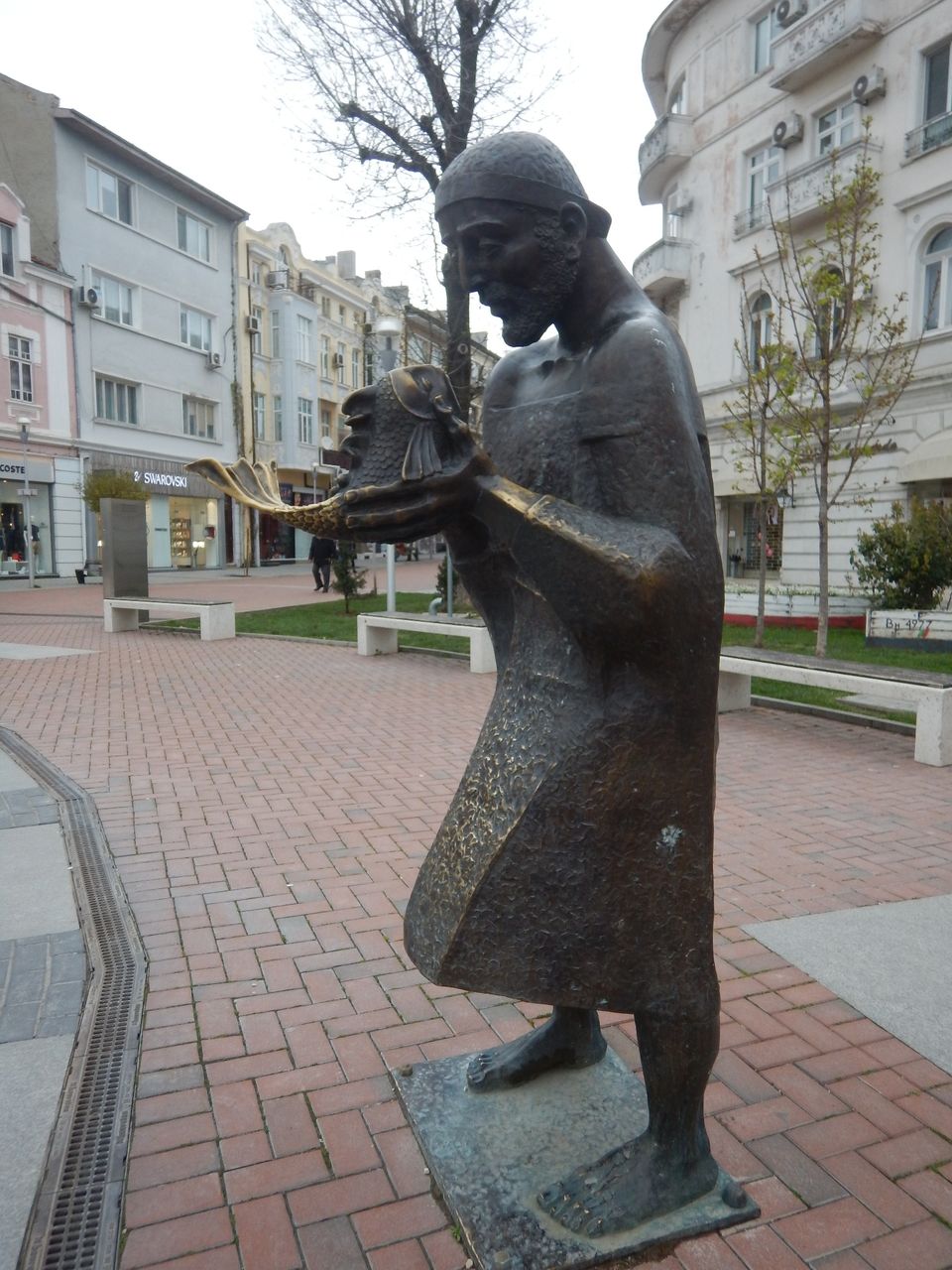

Odessos later became a Christian centre. The Bulgarian Orthodox Church believes that Ampliatus, a follower of St. Andrew, preached here in 56 C.E. Well, we in India believe that St. Thomas the Apostle came to Kerala in 52 C.E. and died in Chennai, so this isn’t hard for us to believe. (The followers of St. Thomas are still called ‘Nasrani’ an Indianised version of ‘Nazarene’.)


In 442 C.E. the Roman Emperor Theodosius II signed a peace treaty with Attila the Hun at Odessos. It is also likely that the Treaty of 681 between Khan Asparukh, the founder of the Bulgarian empire, and the Byzantines might have been signed here too. During the 9th and 10th centuries a monastery in Varna may have played a key role in the development of the Cyrillic script.
By the late 13th century, maritime trade with Genoa, Venice and Constantinople had turned Varna into a thriving port. Timber, animal skins, honey, wax, wheat and wine were exported. Ships were built, coins were minted, leather goods, ceramics, and jewellery were produced.

Varna was captured by the Ottomans in 1389 and besieged by the Crusaders in 1444 in what was one of the last battles of the Crusades. Ladislaus III of Poland, the commander of the Crusaders, was killed. Constantinople fell to the Ottomans in 1453. Varna and most parts of Bulgaria were ruled by the Ottomans for four centuries thereafter.

The Russians captured Varna in 1773, losing it very quickly and retaking it in 1828, following the prolonged Siege of Varna. Two years later it reverted to the Ottomans. With the Crimean War (1854-1856) came the British and French, cholera and a devastating fire. In 1878 Russian troops liberated the city. In the 20th century came the two World Wars. In 1944 Russian troops brought communist ideology. Trade with the USSR boomed from the 1950s to 1970s. International festivals and events were held here and tourism developed rapidly. Varna became Bulgaria’s de facto summer capital.


We had dinner at a seaside restaurant that looked like a ship. The food wasn’t designed for Indian palates. Fish without spices, boiled potatoes without chilli or tamarind. To cut a long story short we ate what we were served. A culinary description of the entire trip would go something like this. Not much to write home about. But aren’t we supposed to do in Rome as the Romans do? Well, we ate in Bulgaria what the Bulgarians ate.
The Varna Archaeological Museum was something we missed. Its most celebrated exhibit is the Gold of Varna, which spans three separate exhibition halls. But we did see some of the ‘Gold of Varna’ at the museum in Sofia.

How To Get to Varna
The world is in virtual lock-down now. When things get better, fly to Sofia and find your way from there. Varna does have an airport and it isn't closed at the moment, but I wouldn't recommend it. Just stay home! And live to travel another day! (Not in another life!)
Bulgaria - the Back of Beyond
https://www.tripoto.com/bulgaria/trips/bulgaria-the-back-of-beyond-5e9c20c5340b2




